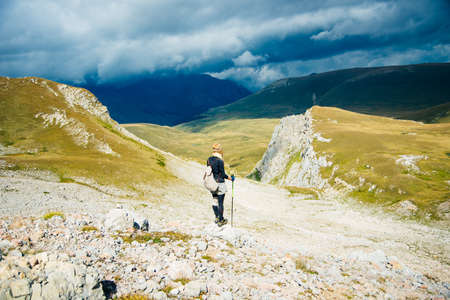Introduction: The Role of Community Walks in British Life
Across the United Kingdom, community walks have long held a cherished place in both rural and urban settings. These walks, deeply embedded in British culture, are far more than leisurely strolls; they are a living tradition that connects generations, brings neighbours together, and strengthens the social fabric. From the rugged coastlines of Cornwall to the bustling streets of Manchester, organised and informal group walks offer an accessible means for people to engage with their local environment while fostering physical and mental wellbeing. As society evolves, so too does the significance of these communal journeys—serving not only as an antidote to isolation but also as a celebration of the nation’s diverse landscapes and shared heritage. This article delves into how community walks continue to shape both rural and urban Britain, weaving together personal stories that highlight their enduring impact on individuals and communities alike.
Rural Traditions: How Village Walks Sustain Local Heritage
Community walks in the British countryside are far more than leisurely strolls; they are enduring rituals that bind generations and safeguard rural heritage. Having led several walking groups through picturesque villages from the Cotswolds to the Lake District, I have witnessed how these shared journeys become vessels for tradition and belonging. During one such walk in a small Yorkshire village, an elderly resident recounted tales of May Day celebrations and local legends as we followed ancient footpaths. Her stories were not just entertainment—they were living history, preserved and passed on by each step taken together.
These walks often form the backbone of village life, providing opportunities for residents—young and old—to forge connections that span decades. For example, annual village walks organised around local festivals are occasions where newcomers learn about age-old customs, such as wassailing or well dressing, directly from long-standing members of the community. This intergenerational exchange is pivotal in maintaining a strong sense of place and identity.
Key Ways Village Walks Sustain Rural Heritage
| Tradition | Description | Impact on Community |
|---|---|---|
| Storytelling Along Footpaths | Sharing folk tales and historical anecdotes during walks | Keeps oral history alive; strengthens cultural knowledge |
| Seasonal Celebrations | Organising walks around traditional events (e.g., harvest festival) | Reinforces communal bonds; encourages participation across ages |
| Nature Conservation | Engaging locals in preserving hedgerows and public rights of way | Protects landscape heritage; fosters stewardship ethos |
| Skill Sharing | Elders teaching map-reading, birdwatching, or foraging skills during walks | Transmits practical knowledge; empowers younger generations |
As a leader, I have found that these community walks not only preserve traditions but also adapt them for modern relevance. Walking groups now often include discussions on environmental sustainability, ensuring that heritage evolves with contemporary values. The sense of continuity—walking in the footsteps of ancestors while engaging with present-day issues—is what sustains vibrant rural identities across Britain’s diverse landscapes.

3. Urban Connections: Revitalising Cities through Community Walks
In the heart of Britain’s cities, community walks are breathing new life into urban environments. Organised walks offer a unique platform for residents to rediscover their surroundings, forging connections that transcend age, ethnicity, and social background. In London, for example, monthly walking groups traverse historic neighbourhoods and modern districts alike, creating opportunities for spontaneous conversations between long-time locals and recent arrivals. As one organiser from Manchester recounted, “Our city walks have become a tapestry of stories—each participant adds their own thread.”
These urban initiatives are not merely about exercise or sightseeing; they serve as vehicles for reclaiming public spaces that may otherwise feel impersonal or inaccessible. In Birmingham, guided walks often explore underutilised parks and overlooked alleyways, transforming them into vibrant meeting points. Participants share memories associated with certain streets or landmarks, collectively reimagining what these spaces mean to the community. A member of a Liverpool walking group noted, “Walking together has changed how we see our city—we now greet familiar faces on every corner.”
Moreover, organised walks in towns and cities foster an inclusive spirit by encouraging participation from all walks of life. Special themed walks—such as those highlighting multicultural history or local art—offer additional layers of meaning, drawing attention to the shared heritage and evolving identity of urban Britain. These gatherings provide a safe environment where differences are respected and common ground is celebrated. In doing so, they help bridge divides and promote civic pride across diverse communities.
4. Intergenerational Bonds: Walks as a Bridge Between Ages
One of the most profound impacts of community walks in Britain, both in rural hamlets and bustling urban areas, is their ability to foster intergenerational connections. These shared walking experiences serve not only as a means for physical activity but also as vital bridges linking children, parents, grandparents, and neighbours across generations.
The Value of Shared Stories on Community Walks
In British culture, storytelling is deeply embedded in daily life, and community walks present an ideal platform for the exchange of personal histories and collective wisdom. Whether along the coastal paths of Cornwall or through London’s historic parks, these journeys create opportunities for older residents to share anecdotes from their youth or insights into local history, while younger participants contribute fresh perspectives and curiosity.
Examples of Intergenerational Engagement
| Setting | Activity | Outcome |
|---|---|---|
| Village Green (Rural) | Family-led heritage walk | Younger generations learn about local landmarks from elders |
| Urban Park (City Centre) | Neighbourhood story strolls | Diverse age groups share migration stories and traditions |
| Suburban Estate | School-organised nature walks with grandparents | Children gain environmental knowledge; elders feel valued and involved |
The Ripple Effect Within Families and Communities
These interactions do more than merely pass the time; they reinforce respect between age groups and foster a sense of belonging. Grandparents often recount tales of wartime Britain or explain the origins of local customs, instilling a deeper appreciation in younger participants for the country’s social fabric. In turn, children and teenagers introduce new interests—such as digital mapping apps—to their elders, ensuring that knowledge flows both ways.
Sustaining British Heritage Through Walking Traditions
This reciprocal sharing helps sustain cherished British values such as neighbourliness, mutual support, and continuity of local heritage. By nurturing relationships that span generations, community walks empower individuals to connect meaningfully with their environment and each other—strengthening the social cohesion that underpins both rural villages and urban boroughs across Britain.
5. Challenges and Opportunities: Inclusivity and Accessibility in Community Walks
While community walks play a vital role in shaping both rural and urban Britain, issues of inclusivity and accessibility remain at the forefront of discussions among organisers and participants alike. Despite their popularity, not all individuals can enjoy the benefits of these gatherings equally. Barriers such as uneven terrain, lack of accessible pathways, limited public transport links in rural areas, and insufficient information on walk suitability can exclude elderly residents, people with disabilities, or families with young children.
Understanding the Barriers
In many British communities, especially those in remote countryside or older town centres, infrastructure may not yet fully support the needs of all potential walkers. For example, narrow footpaths without ramps or proper surfacing can deter wheelchair users or those with mobility aids. Similarly, infrequent buses or train services make reaching starting points difficult for people without private transport, particularly in rural settings where distances are greater and resources scarcer.
Innovative Local Initiatives
However, across Britain, there is a growing recognition of these challenges and a strong push towards more inclusive solutions. Local councils and voluntary groups have begun launching initiatives such as ‘Walking for All’ programmes, which specifically design routes that accommodate wheelchairs and prams. In Yorkshire, for instance, community volunteers have mapped out circular walks that avoid steep gradients and provide clear signage for accessible facilities en route. Meanwhile, London’s city boroughs are investing in step-free access to popular green spaces and providing guided group walks tailored to various abilities.
A Culture of Belonging
The success of these efforts lies not only in physical adaptation but also in fostering a culture where everyone feels welcome. Many groups now offer ‘buddy systems’ pairing experienced walkers with newcomers who may feel uncertain about joining due to age or ability. Schools and care homes increasingly collaborate with local walk leaders to organise intergenerational strolls—ensuring that walking remains a truly communal activity, building bridges between different backgrounds and life stages.
Ultimately, making community walks accessible to all is both a challenge and an opportunity—a chance to reinforce Britain’s values of fairness and inclusion while strengthening local bonds. By addressing barriers head-on and championing innovation, communities across the country are ensuring that the simple act of walking continues to unite people from every walk of life.
6. Conclusion: Personal Reflections on the Lasting Impact of Walking Together
Drawing on my own experiences as a group leader and the many stories shared by participants from across Britain, it is clear that community walks are far more than a means of physical exercise or leisure. These journeys—whether through the winding lanes of a rural village or the vibrant streets of an urban neighbourhood—serve as powerful catalysts for social connection, mutual understanding, and collective identity.
The Enduring Strength of Social Bonds
Walking together fosters relationships that might otherwise never have formed. The simple act of sharing a path allows individuals from different backgrounds to engage in authentic conversation, breaking down barriers that can often exist in both rural isolation and urban anonymity. Over time, these bonds become resilient threads in the fabric of British society, helping communities to withstand challenges and celebrate triumphs together.
A Shared Sense of Place
Community walks encourage participants to experience their surroundings with fresh eyes, deepening their appreciation for local heritage and landscape. Whether exploring historic market towns or traversing city parks, walkers develop a sense of stewardship and pride in their environment. This connection to place nurtures responsibility and inspires ongoing engagement with local issues, ensuring that communities remain vibrant and adaptive.
Shaping the Future Together
The personal stories gathered throughout this article highlight how community walks continue to shape both rural and urban Britain. Each step taken together reinforces the importance of inclusivity, empathy, and collective action. As we look ahead, it is vital to support these grassroots initiatives—investing time, resources, and energy into opportunities for shared walking experiences—so that future generations may inherit communities bound not only by proximity but by genuine connection.
In conclusion, walking side by side remains one of the most accessible yet profound ways to strengthen British society. By continuing to walk together, we honour our diverse histories while forging a united future rooted in shared experience and mutual respect.


